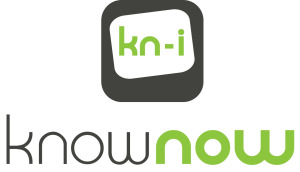Number 1
KnowNow is the Number 1 Tech StartUp ranked by the IBM Global Entrepreneur Program at London Tech Week. A fantastic result and recognition for all the hard work we have put in working with IBM Bluemix and delivering award-winning smart city innovations.
Smart City Services Company
KnowNow is a Smart City Services company delivering award-winning IT innovation. David
Patterson (KnowNow co-founder) is talking about KnowNow’s BeatHouse and Flood Event Model projects on Tuesday 16th June from 6 pm at the IBM BlueMix Garage on L24, One Canada Square, for Bluemix’s 1st Birthday celebrations.
BeatHouse
KnowNow’s BeatHouse collaborative project was launched at this year’s EcoTech Show. Beathouse is an evolving story that we will play out in real time. KnowNow is creating a solution that will allow the owners of BeatHouse to maximise their investment in a low-carbon home, while staying comfortable in terms of temperature and bills to be paid. Eventually, the building control will be carried out autonomously.
BeatHouse is a data mash-up decision engine. It takes across multiple zones the real-time temperature & humidity data inside and outside the property. It also brings in the power consumption and generation (from the PV) and tries to balance local demand with local generation. Finally, real-time weather data is then fed into the mix. The data pile is analysed and then rated against two key criteria: Cost and Comfort. Depending on the answer a set of outcome options are either requested to be chosen or will be acted upon automatically.
Where we are today is what we call listening mode. Understanding the mood of the house and the owners living there. The next phase is interaction. Checking that what is happening is the best outcome for that particular time, season, and mood. The final phase is autonomy. BeatHouse knows what it has to do to be sustainable and make Mr. Pepper happy.
The focus of KnowNow is to make information useful. Move away from the gimmick of many IoT solutions and get to the nub of the issue. In the case of BeatHouse, the useful outcome is not information per se. It is a trusted validation that BeatHouse is delivering cool things for the owners. Cool in terms of temperature and cool in terms of not having to spend more than you have to for your energy!
Flood Event Model
KnowNow’s award-winning Flood Event Model was born out of a proof of concept undertaken with the assistance of the STFC and IBM’s ETS team. The model is a predictor of flood risk at a specific location when a weather event occurs.
The idea for this innovation came out of last year’s BlueLight Camp and focused on the need to provide useful information that can make a difference. The model will be delivered in two phases. The first is a simple Time Machine. This will be available for Hampshire only initially, with the intention as funding and/or demand dictates roll this model out to other counties, regions, and countries. The Time Machine will be able to tell you when flood events have occurred based on your location.
The next phase is to work with our partners to deliver useful outcomes based on a real-time assessment of flood risk. This will involve generating outcomes that are fit for the recipient. Plus these outcomes can come in various formats. From a tweet to a text message through to a job card on a work order management system.
BlueMix
KnowNow’s innovations have some or all of their compute needs serviced by IBM BlueMix. KnowNow is part of IBM’s Global Entrepreneur program. The Bluemix platform is cloud-based, very flexible, and with some already world-class services available to be used. You pay for what you use, only when you use it. More importantly for KnowNow, we have the support of Big Blue for some of the more tricky technical situations we sometimes find ourselves in when dealing with bleeding-edge innovation.
Thanks for reading, Chris



